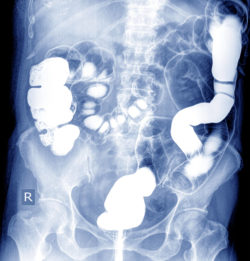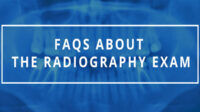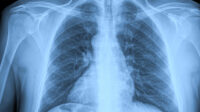In honor of National Radiologic Technologist Week, we talked to a couple rad techs to get the inside scoop on the career path and tips for those thinking of pursuing it. Here’s what we learned from Kym Sawyer, Rad Tech.

What inspired you to pursue the Rad Tech Path?
Sawyer: When I was in high school I had taken an aptitude test and the results showed that I would be good working with people in the medical field as an X-Ray Technologist. After high school, I attended Santa Rosa Junior College (SRJC). The first semester I took a class that allowed me to shadow an X-Ray Technologist at a local hospital. However, after two semesters at SRJC I realized that I was not mature enough for college. Subsequently, I got a job at the county hospital as a Medical Record clerk. Being a medical record clerk wasn’t very exciting, but I stuck with it for eight years. During that time, I was exposed to the many facets of medicine. I liked the idea of helping people and realized that being an X-Ray tech would be a good fit for me. I would be able to help people in their time of need but wouldn’t be able to spend so much time with them that I would become attached.
What advice do you have for those people starting their Rad Tech Programs?
Sawyer: I say to every student that rotates through our facility, “treat the clinical aspect of their schooling as a job, because someday you may end up applying at any one of the facilities you rotate through. Show up on time ready to work. If there are no patients, find a cabinet to stalk, clean something or study.” Before Electronic Medical Records (EMR) and digital radiography, there was always something to file or cassettes to clean.
What do you wish you knew before you became a Rad Tech?
Sawyer: The potential catastrophe of a barium enema.
Have you had a hard time finding open positions?
Sawyer: I have never had a hard time finding a job, however, most of the positions I got all started out per diem, which seems to be the trend. I only know of a handful of people who got full-time positions straight out of school.
How much has radiography changed over time?
Sawyer: I have seen many changes in radiography over the past two and a half decades – all of them good. We used to wait 90 seconds for a film to develop and now we get instant results with digital radiography. Digital radiography also delivers less dose to the patient. CT has gone from single slice scanners to helical scanning, allowing for more comprehensive studies in a lot less time.
How much heavy lifting (patients) is involved?
Sawyer: That depends on where you work. In an outpatient setting, an X-Ray Technologist will deal mostly with “walkie-talkie” patients. In an acute care facility, there is heavy lifting daily.
What do you do to de-stress?
Sawyer: I ride my bike to de-stress.
As a veteran rad tech, do you ever get bored of the job?
Sawyer: Heck no! The exams may be the same but every patient is different. Being an X-Ray technologist has been a rewarding career for me and it has opened more doors for me than I ever imagined.
What do you wish people knew about Rad Techs?
Sawyer: That we are not just “button pushers”. At SRJC, the program is a full two years, summers included and we had to complete 2400 hours of clinical. Yes, some exams are routine, however, a Computed Tomography Angiography (CTA) can be quite stressful. Physicians, patients and their family members count on us to do a diagnostic study, sometimes in a life and death situation, where there is no room for error.
How hard is the ARRT exam?
Sawyer: I remember the ARRT exam to be challenging.
What did you use to study?
Sawyer: Back in the day, before online study material, we used a yellow book. Unfortunately, the name of that book escapes me. Funny how I carried that book with me for three months straight, and now it is just a memory.





